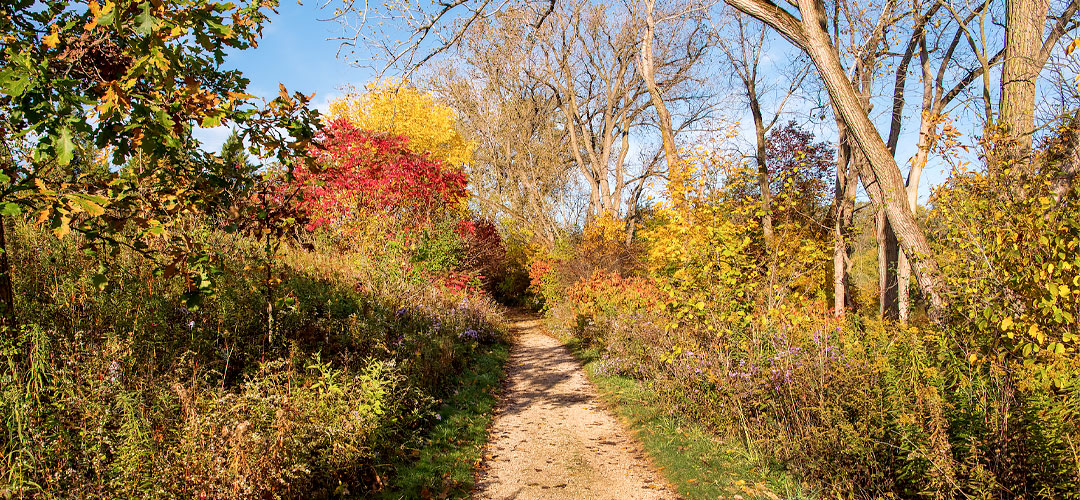As the days get shorter, you might be looking for off-the-beaten paths where you can soak up the rest of the season. I’ve got just the place for you—the Barbara Brown Nature Reserve.

Tucked away on the Chicago Botanic Garden’s southeast side, just north of Dundee Road, the Reserve is relatively unknown, even to longtime visitors. As an assistant ecologist, I’m in the Reserve a lot, and often by myself. I’m always puzzled that so few people have discovered it.
Here are just a few reasons to visit:
The color purple—and more
The fall colors are amazing—purple asters, yellow goldenrods, reddish-purple nannyberry. Native goldenrods include blue-stemmed goldenrod (Solidago caesia), a wildflower with blue-green stems. Follow the winding paths through the Reserve’s aquatic, prairie, and woodland habitats.
The drama of birds for even non-birders
It’s fascinating to watch the migratory birds on their way south, or to just pick a quiet spot to observe wading birds. Look for great blue herons, perched on logs in the water and ready to hunt. They’ll sneak up on a fish, spear it, toss it in the air, and swallow it whole.
You can also keep an eye out for hawks and bald eagles, or come across a colorful wood duck. And if you’re lucky, you’ll see an elusive black-crowned night heron, fishing along the shoreline.
Nope, you’re not in a movie theater
If you’re in the Reserve’s prairie when the breeze is just right, you might pick up on the fragrance of prairie dropseed, a short, mound-forming prairie grass. It smells like burnt and/or buttered popcorn.
Call of the wild
After successful restoration work, thriving native plant species now provide food and habitat for wildlife, including short-tailed shrews, leopard frogs, moths, and butterflies.
A picture-perfect pond
The restoration work also allows visitors to get a great view of the 6-acre pond, framed with color. Look for swamp white oaks turning a nice burnt yellow, shagbark and bitternut hickories turning vibrant yellow, and hazelnut trees turning shades of yellow, orange, and red.
My favorite place in the Reserve is the southeast corner. I love the views across the pond, with the Garden’s other shorelines in the distance. Every day, I see something new, which makes it all the more exciting.

